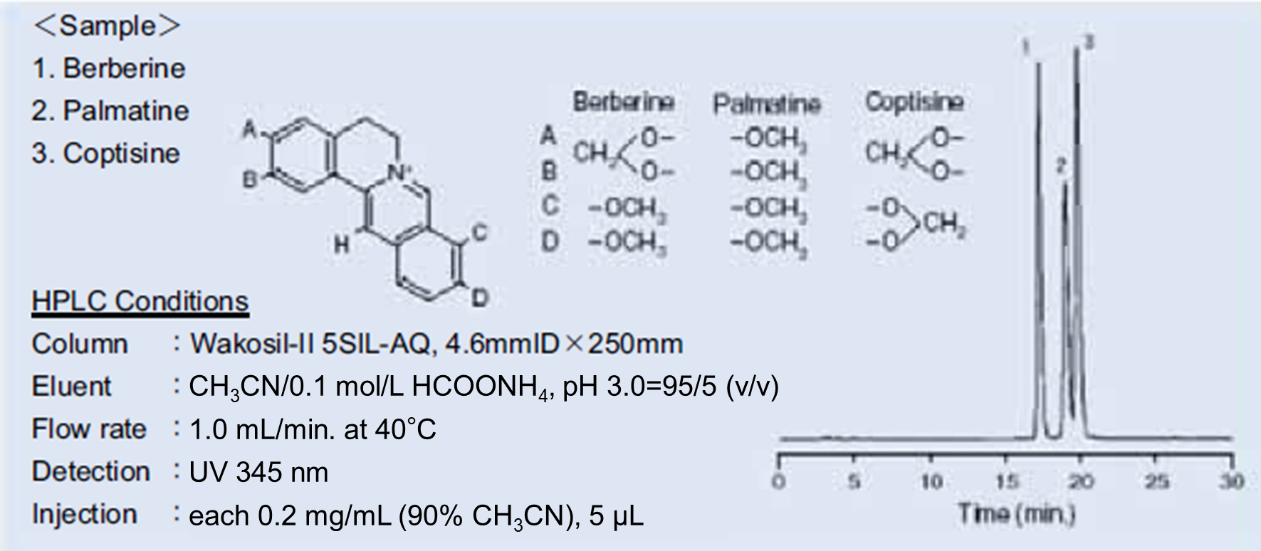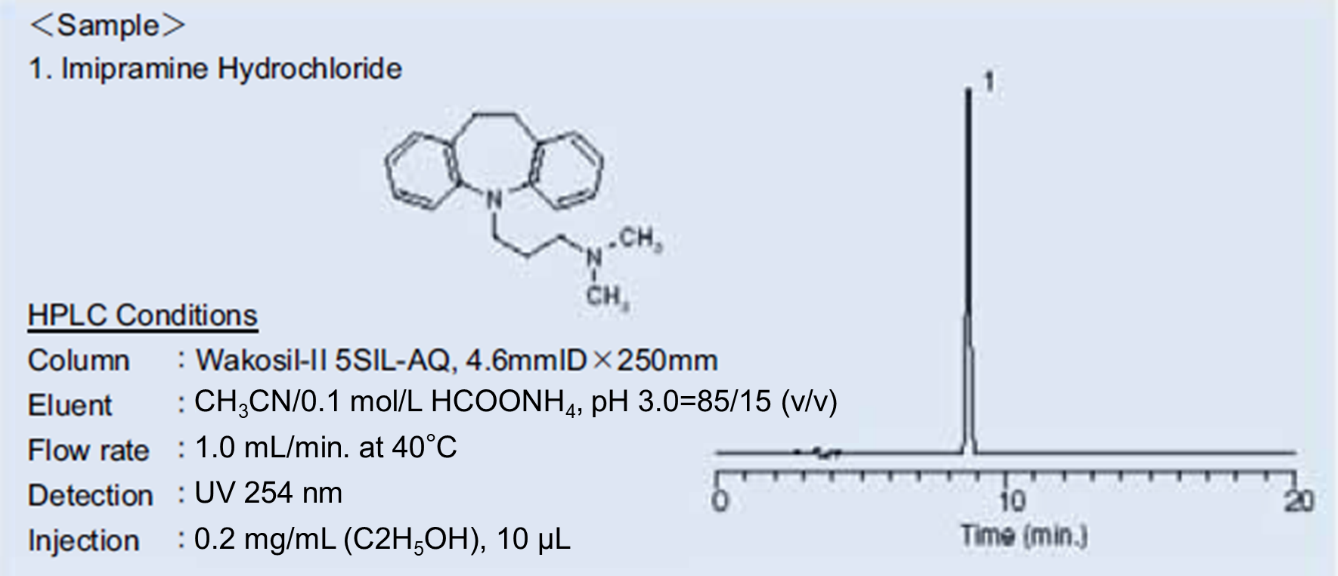[Chromatography Q & A]: What Methods are Available for LC/MS Analysis of Highly Polarized Analytes?
This article was written for No. 42 (October 2006), of Analytical Circle.
For columns used in LC/MS, highly versatile reverse-phase octadecyl-silica gel (C18, ODS) is a mainstay packing agent. This ODS packing agent, however, has difficulty in separating a particular type of analytes. To overcome such difficulty, packing agents with various carbon chain length, shorter and longer than C18 such as C1, C4, C8, C22, and C30, as well as other packing agents such as fluoroalkyl one (Fluofix) are used.
LC/MS analysis of highly polarized analytes can employ the following applications: use of ion-pair reagents in addition to the above reverse-phase packing agent and mobile phase; derivatization of analyte; and use of ion-exchange chromatography. The reverse-phase packing agent, however, has difficulty in separating highly polarized analytes represented by drugs and drug metabolites, even using ion-pair reagents or aqueous mobile phases with low-eluting capability. In addition, derivatization of such analytes requires laborious operations, and ion-exchange chromatography is applicable to specific analytes only. As one of the solutions, this article introduces a method utilizing hydrophilic interaction chromatography.
The term of hydrophilic interaction is abbreviated to "HI," and chromatography utilizing this interaction is referred to as "Hydrophilic Interaction Liquid Chromatography (HILIC)." HILIC uses a combination of hydrophilic packing agent and hydrophobic mobile phase mostly composed of organic solvent, and in a broad sense, it is considered to be one type of normal-phase liquid chromatography.
Representative hydrophilic packing agents include unmodified silica gel (with silanol group) as well as silica gel with diol, amino, and amido groups.
As an example, analysis of herbal medicine ingredients using Wakopak Wakosil-II 5SIL-AQ, a column that is packed with unmodified silica gel and dedicated to analysis of highly polarized analyte, is presented (Figure 1).

Figure 1. Analysis of herbal medicine ingredients
As shown in Figure 1, the column is available for analysis using acidic mobile phase at an organic solvent concentration of ≥80%. In addition, it is also available for analysis of basic analytes such as tricyclic antidepressant (imipramine) without ion-pair reagents (Figure 2). As shown in Figure 2, tailing is reduced. Furthermore, the mobile phase condition is directly compatible with LC/MS analysis.

Figure 2. Analysis of tricyclic antidepressant (imipramine)
As shown above, techniques utilizing hydrophilic interaction require no ion-pair reagents and enable analysis with a mobile phase mostly composed of organic solvent, and Wakopak Wakosil-II 5SIL-AQ is considered to be effective in analyzing highly polarized analytes by LC/MS. Trial use of Wakopak Wakosil-II 5SIL-AQ is highly recommended.




